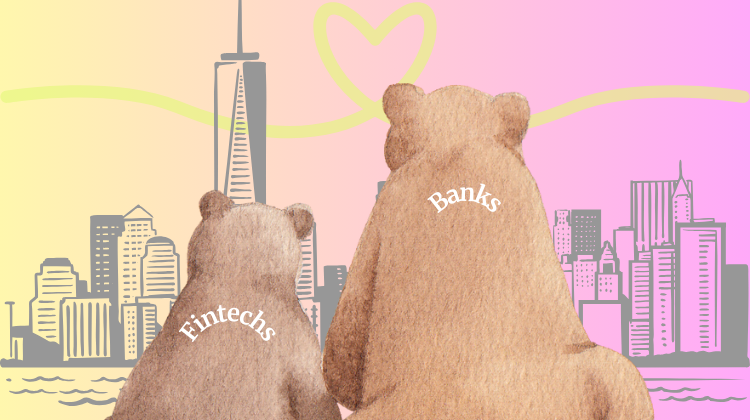The Partnership Reckoning: How financial services learned to stop worrying and love (partnership) due diligence
- The financial services industry has spent the better part of a decade chasing the partnership dream, but the era of "collaboration for collaboration's sake" is officially over.
- From Goldman Sachs exiting Apple Card to Wells Fargo losing millions monthly on Bilt, here's how banks and fintechs are learning the difference between strategic alignment and wishful thinking.

The era of “collaboration for collaboration’s sake” is over. Here’s what’s replacing it.
The financial services industry has spent the better part of a decade chasing the partnership dream. Banks wanted fintech innovation. Fintechs wanted banking infrastructure. Everyone wanted to win.
But somewhere between the press releases and the pilot programs, reality set in. Not every partnership is destined for success, and the industry is finally learning to tell the difference between strategic alignment and wishful thinking.
The evidence is everywhere: Goldman Sachs is looking to exit its Apple Card partnership years ahead of schedule, Wells Fargo is reportedly losing $10 million monthly on its Bilt credit card deal, and the entire Banking-as-a-Service ecosystem has been reshaped by regulatory pressure that’s forcing both sides to rethink their approach.
This isn’t a story about partnerships failing. It’s about an industry maturing from partnership enthusiasm to partnership pragmatism.
The Golden Age hangover
Remember when every bank-fintech collaboration was hailed as the future of financial services? Those days feel quaint now. The Goldman-Apple partnership, once positioned as a “strategic masterstroke,” has become a cautionary tale about misaligned incentives and operational realities.
Goldman found itself “saddled with all the responsibility for a weird lending portfolio that was rapidly deteriorating,” while Apple got the customer relationship and brand benefits. The math never worked for Goldman, despite the partnership’s surface-level appeal.
Wells Fargo’s experience with Bilt tells a similar story. Despite Bilt’s genuine success — the company generates nearly $20 billion in annual spending with profitable unit economics — the partnership has become a monthly drain on Wells Fargo’s bottom line. Success for one partner doesn’t automatically translate to success for both.
These aren’t isolated incidents. They’re symptoms of an industry-wide shift away from partnerships based on potential toward partnerships based on proven value.
The regulatory reality check
The Banking-as-a-Service sector, once the poster child for bank-fintech collaboration, has been particularly affected by this recalibration. Regulatory scrutiny has intensified, with consent orders hitting partner banks and compliance costs rising across the board.
The result? A narrowing partner bank network and a much more selective approach to new partnerships. Banks are prioritizing “quality over quantity,” focusing on relationships with fintechs that demonstrate long-term commitment and robust compliance frameworks.
This regulatory pressure isn’t necessarily a bad thing. It’s forcing both sides to build more sustainable partnership models that can withstand scrutiny and deliver genuine value over time.
The hug of death
But regulation isn’t the only challenge. Many partnerships fail because of fundamental misalignment in how banks and fintechs operate. MIT researcher Alan Thorogood coined the term “hug of death” to describe what happens when a bank’s bureaucratic embrace suffocates a fintech’s agility.
Fintechs thrive on speed and growth. Banks operate on process and risk management. When these cultures clash, even well-intentioned partnerships can become resource drains that prevent fintechs from achieving their strategic goals.
The solution isn’t to avoid partnerships entirely. It’s to establish clear boundaries from the start and maintain focus on shared objectives rather than getting lost in endless alignment meetings.
What actually works in partnerships
Despite the challenges, successful partnerships are thriving. They’re built on genuine strategic alignment rather than opportunistic convenience.
Fifth Third’s embedded finance initiative, Newline, offers another model for success. By prioritizing “a standardized compliance and oversight model and only working with clients that want to be in it for the long haul,” the bank has seen its commercial payments revenue grow by 10%.
The common thread among successful partnerships? Clear value propositions, aligned incentives, and realistic expectations about what each party brings to the table.
The new partnership playbook
Today’s successful financial services partnerships share several characteristics that distinguish them from their predecessors:
Due Diligence Over Hype: Partners are conducting deeper operational and cultural assessments before signing deals. The question isn’t “what could we build together?” but “what should we build together, and why?”
Aligned Economics: Successful partnerships ensure both parties benefit financially. One-sided economic arrangements, no matter how strategically sound they appear, tend to create resentment and instability over time.
Realistic Timelines: The pressure to show immediate results has given way to more patient capital and longer-term thinking. The best partnerships are designed to compound value over years, not quarters.
Clear Governance: Successful partnerships establish decision-making frameworks upfront, preventing the bureaucratic drift that kills fintech agility.
Exit Strategies: Paradoxically, partnerships with clearly defined exit mechanisms tend to last longer. When both parties know they can walk away, they’re more motivated to make the relationship work.
Looking forward
The partnership landscape in financial services is becoming more sophisticated, not less collaborative. Banks and fintechs are learning to identify genuine strategic fit rather than chasing partnership for its own sake.
This evolution is healthy for the industry. The partnerships that survive this reckoning will be stronger, more sustainable, and more valuable to customers. Those that don’t were probably doomed from the start.
The era of partnership pragmatism has arrived. And that’s exactly what the industry needs.


